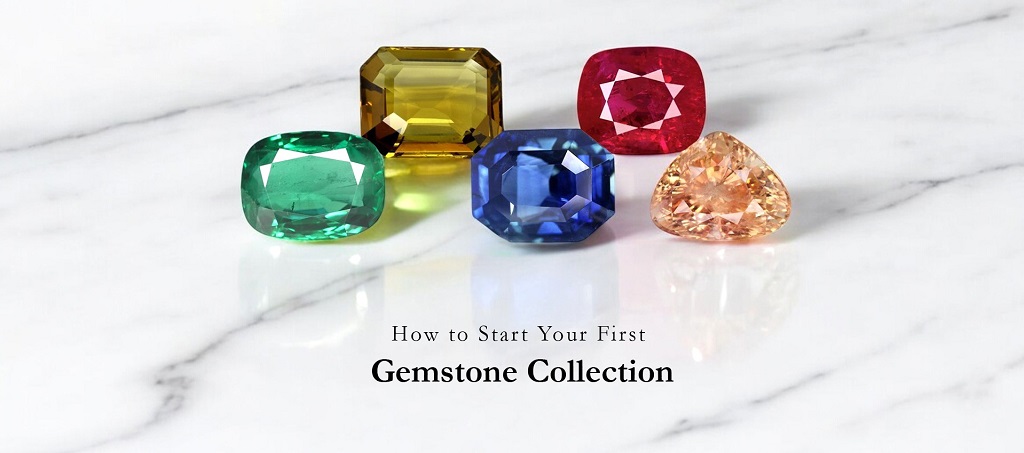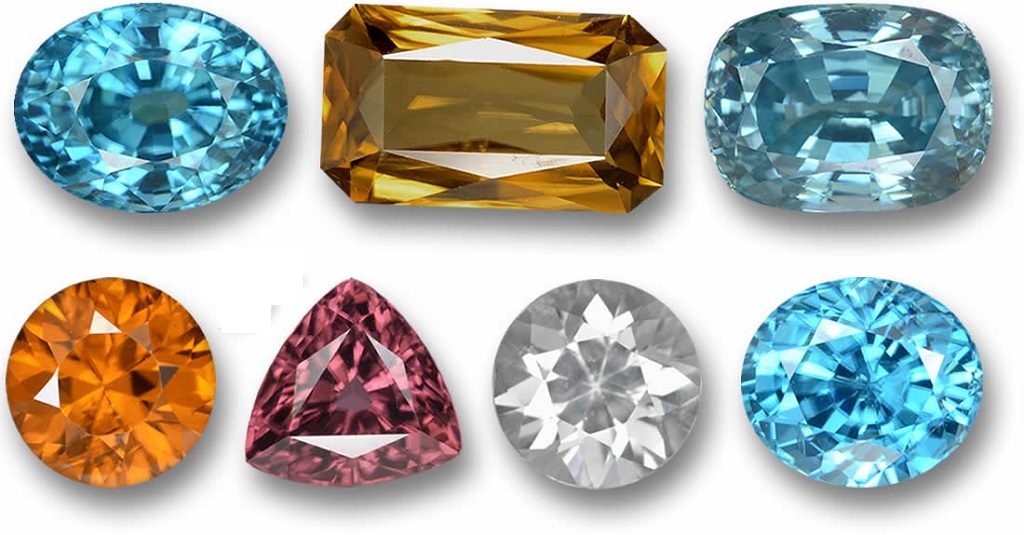
How to Waterproof Suede Boots Naturally
September 29, 2025Calculating Your Team Building ROI
October 16, 2025Collecting coloured gemstones is more than a hobby—it’s an art. From the deep red fire of a ruby to the vivid blue of a sapphire, these stones carry history, rarity, and beauty in every facet. For a collector, every gem tells a story: of earth, of pressure, of time. As interest in coloured gemstones rises, both for their aesthetic and investment value, it becomes essential to know how to approach this field wisely.
In this article, you’ll learn how to start—or refine—your journey into coloured gemstone collecting. We’ll explore the key types (rubies, sapphires, emeralds, and more), how to assess quality, pitfalls to avoid, care practices, and how to approach them as assets. Think of this as your guidebook to the vibrant world beneath the surface.
Table of Contents
ToggleWhat is a “coloured gemstone” and how does it differ from diamonds?
Snippet answer: A coloured gemstone is any gem with hue—from ruby red to emerald green—excluding colorless diamonds; their value depends on color, clarity, cut, and rarity.
In gemology, “coloured gemstone” covers all precious and semi-precious stones that show identifiable hues, such as red, green, blue, violet, and more. Unlike diamonds (which are prized for their brilliance and lack of color), coloured gems draw their value largely from the intensity and purity of their hue. A vivid sapphire blue or a rich pigeon-blood ruby can command premium prices because of their scarcity in top quality.
While the “4 Cs” (color, clarity, cut, carat) still apply, the weight each holds shifts. For a coloured gem, color is paramount; clarity is secondary (some inclusions are tolerated), cut is important for maximizing beauty, and carat still drives scale. Also, treatments (like heating, diffusion, fracture filling) are more common in coloured stones. A serious collector must understand them.
Which coloured gemstones are most prized by collectors?
Snippet answer: Top picks include ruby, sapphire, emerald, and occasionally paraiba tourmaline or alexandrite, each prized for rarity, color intensity, and gemological quality.
The classic “big four” are ruby (red), sapphire (blue, pad to other colors), emerald (green), and occasionally jadeite (intense green). But collectors also pursue rarer beasts like:
- Paraíba tourmaline: Neon blues and greens from Brazil or Mozambique.
- Alexandrite: A chameleon gem that shifts color under different light.
- Spinel: Historically overshadowed by ruby and sapphire, but gaining respect.
- Tsavorite garnet & demantoid garnet: Green gems nearly as lively as emeralds but less known.
- Opal: Fireplay and color flash, though more delicate.
Each of these stones has its own “best color window” — for ruby, that’s a pure, saturated red with no brown or purple overtones. For sapphire, clean, deep royal blue without gray or green tones is ideal.
How do you evaluate the quality of a coloured gemstone?
Snippet answer: Use a modified 4Cs approach: color (hue, tone, saturation) is king, clarity based on tolerance, cut for beauty, carat for scale, plus provenance and treatment history.
Let’s break it down:
| Criterion | What to Look For | Why It Matters |
|---|---|---|
| Color | Hue (pure vs mixed), Tone (light–dark), Saturation (vividness) | The single biggest driver of value. A vivid, well-balanced hue wins over size. |
| Clarity | Eye-clean if possible; certain inclusions acceptable if non-distracting | Complete clarity is rare in coloured stones. Some internal features may even confirm natural origin. |
| Cut/Proportion | Balanced angles, symmetry, maximize color | A poor cut can mute color or make a gem look lifeless. |
| Carat/Size | Scale relative to quality | Larger stones are rarer—but only if quality isn’t compromised. |
| Treatment / Origin / Certification | Heat, diffusion, fracture filling; known origins; lab reports | Untreated, rare origins fetch top price; certification provides assurance. |
Always ask for a lab report (e.g. from GIA, AGL, or IGI) for expensive stones. The report should confirm natural origin, treatments, and origin if possible. Also, when comparing stones side by side, subtle differences in hue or tone become obvious—and that’s when value shifts dramatically.
What mistakes do new collectors often make?
Snippet answer: Common errors include chasing carat over color, neglecting certification, ignoring treatment history, buying from unverified sources, and underestimating care needs.
Here are pitfalls to avoid:
- Focusing on size over quality: A larger, pale sapphire is less desirable than a smaller, vivid one.
- Overlooking treatments: Many gems are heat-treated or fracture-filled. Without asking, you may end up overpaying.
- Skipping certification: Without a lab report, you rely entirely on the seller’s word.
- Buying from dubious sources: There are clever synthetics and imitations masquerading as natural gems.
- Neglecting care: Some gems (like opal or emerald) are vulnerable to heat, chemicals, or fractures.
- Ignoring market trends: Demand, supply, and new deposits affect pricing.
By being cautious and informed, you reduce risk. Always start small, ask questions, compare stones in person when possible, and seek opinions from seasoned collectors.
How should you start your coloured gemstone collection?
Snippet answer: Begin with one category (e.g., sapphire), set a budget, learn through experience, use reputable dealers, and document each gem thoroughly.
Here’s a step-by-step approach:
- Select a focus area: Choose one type (e.g. sapphires) to become fluent rather than scattering across many stones.
- Set a budget: Know your upper and lower limits to prevent emotional overspending.
- Study and compare: Visit gem shows, auction houses, or trusted dealers. Use side-by-side comparisons.
- Insist on reports: Attach certification to every major acquisition.
- Document every purchase: Photograph, record weight, measurements, origin, treatment, seller details, and price.
- Protect and insure: Use safe storage, trusted insurance, and regular inspections.
Over time, you’ll refine your eye. You’ll learn to sense a gem’s color strength, understand inclusions, and negotiate like a pro.
How do you care for and maintain coloured gemstones?
Snippet answer: Clean gently (mild detergent, soft brush), avoid sudden temperature change, store separated, inspect regularly, and recheck settings.
Gemstones vary in hardness, fragility, and sensitivity. Here are general care tips:
- Gentle cleaning: Use warm water, mild dish soap, soft brush. Avoid ultrasonic or steam cleaning unless the stone and treatment allow it.
- Avoid chemical exposure: Harsh chemicals (acids, bleach, strong detergents) can damage certain stones or treatments.
- Watch temperature changes: Sudden shifts can crack or craze some gems, especially opals and emeralds.
- Separate storage: Store each gem individually (soft pouches, padded boxes) to prevent scratching.
- Inspect settings: For mounted gems, check prongs regularly to avoid loss.
- Professional periodic care: Every few years, have them cleaned and examined by a gemologist or trusted jeweler.
If you keep good records and care for your pieces, your collection can last generations, even increase in value.
Can coloured gemstones be a sound investment?
Snippet answer: Yes—if you choose wisely. The best gems appreciate when they’re rare, high quality, and well-documented, but they’re less liquid than other asset classes.
Gemstones differ from stocks or real estate. They don’t produce income, and selling may take time. Yet, many gems have shown strong appreciation over decades—especially top rubies, sapphires, and rare types like fine alexandrite or untreated sapphires.
To treat your collection like an investment:
- Focus on rarity and top-tier quality: Only the highest-quality, well-documented stones tend to hold or increase value.
- Stick to known types and origins: Gems from historic or rare sources (e.g. Burmese rubies, Kashmir sapphires) command premium prices.
- Hold long term: Gemstone markets often reward patience.
- Diversify—but not too broadly: Having a few strong “star” pieces is often better than many mediocre ones.
- Be aware of costs: Certification, insurance, secure storage, and transaction fees all eat into returns.
A well-chosen gemstone can bridge the world of art, luxury, and investment—but it’s not a guaranteed quick profit. Approach it with thoughtful expectations.
How to source gemstones from around the world?
Snippet answer: Use trusted dealers, auctions, gem shows, mines (if possible), and ethical supply chains—but always verify provenance and documentation.
Here are routes to explore:
- Reputable dealers: Seek those with verifiable credentials, long track records, and transparent policies.
- Gem and jewelry shows: Like Tucson, Bangkok, or Hong Kong fairs; you can compare many stones and negotiate face-to-face.
- Auction houses: Sotheby’s, Christie’s, and specialist firms may offer rare pieces with full documentation.
- Direct from mines or local agents: This is high risk but high reward—only if you fully understand the local market and legalities.
- Ethical / sustainable supply chains: Increasingly important. Ask for Mine-to-Market chains or conflict-free guarantees.
As you grow in knowledge, you’ll spot which sources deliver reliability and value. Always verify origin, treatment, and authenticity before purchase—even if dealing with seasoned sellers.
Read More Also: How to Waterproof Suede Boots Naturally
Conclusion
The art of collecting coloured gemstones blends science, aesthetic judgment, and patience. It’s about seeing more than what’s visible: recognizing color nuances, understanding treatments, verifying provenance, and caring for each piece. Whether your aim is beauty, legacy, or financial growth, walking this path thoughtfully is key.
Begin with one gem type, learn deeply, buy carefully, and document everything. Over time, your collection will evolve into a personal treasure trove—with stories, value, and meaning. If you’re ready to start, take the first step: visit a gem show, pick up a handful of stones, and let your eye train itself.
Call to Action: Start today by choosing one coloured gemstone that calls out to you—compare, study, ask questions, and begin your own vibrant journey.
Read More Also: Personal Style After a Major Life Change
Frequently Asked Questions (FAQ)
Q1: Are treated gemstones less valuable than untreated ones?
Treated gemstones usually fetch lower prices than untreated counterparts, but high-quality treated stones still carry value—provided the treatment is disclosed and stable. Many top-quality rubies and sapphires are heat-treated, and that’s accepted practice in the trade.
Q2: Can I mix stones in one collection (rubies, opals, emeralds)?
Yes, you can diversify—but it’s wiser to start with a specialty. Mixing many gem types too early can dilute your ability to compare and discern quality in each.
Q3: How do I verify a gemstone’s authenticity?
Always demand a report from a respected laboratory (GIA, AGL, etc.). Use a loupe or microscope to inspect inclusions. Compare stones side by side. Buy from trusted, transparent sellers.
Q4: How liquid is the gemstone market?
It’s less liquid than stocks or real estate. Selling high-end gems may take time and effort, especially to find buyers who understand value. That’s why patience and documentation matter.
Q5: How often should I re-appraise or insure my collection?
You should revalue and inspect your gems every 2–3 years—and update insurance accordingly. Market values change, and physical wear (or shifting settings) may affect condition.
Q6: Can I ever clean all gemstones the same way?
No. Some gems (like diamonds, sapphires) tolerate ultrasonic or steam cleaning; others (emeralds with fracture fillings, opals, pearls) need gentler methods. Always check suitability first.
Q7: Do colored gemstone investments pay off?
They can—especially with rare, high-quality, well-documented stones. But they’re not guaranteed. View them partly as passion assets. With care and knowledge, many collectors see meaningful gains over decades.
Warning: Trying to access array offset on null in /home/todayd5097/public_html/wp-content/themes/betheme/includes/content-single.php on line 286


